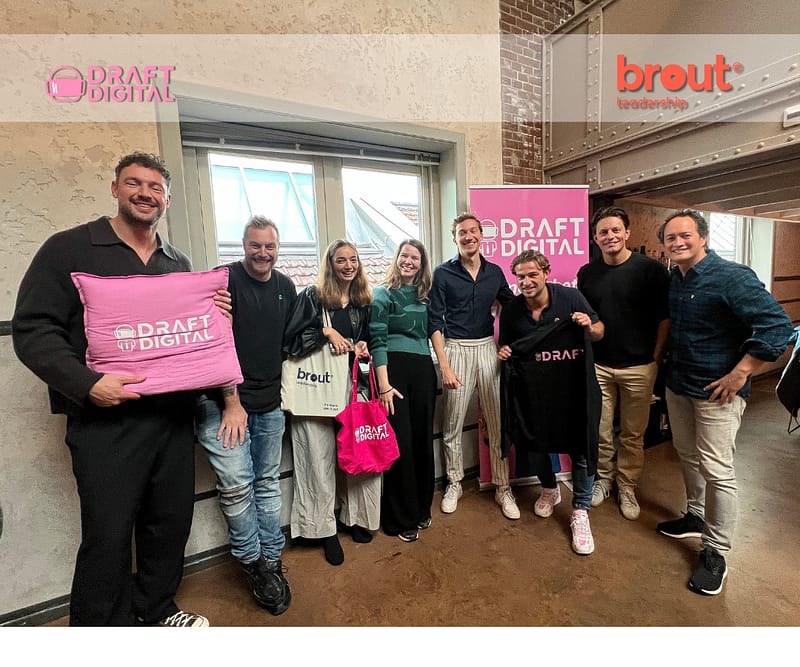In digital marketing, Google and Meta (formerly Facebook) are undisputed giants that have a huge impact on how businesses reach and engage their audiences. But is it always wise to blindly follow their recommendations? A marketing agency should be more critical of the advice these platforms provide, especially when it comes to broad buying strategies and measuring effectiveness. In this blog, we dive into the key areas where marketing agencies need to pay closer attention to deliver successful results.
Marketing Agency: Is Bigger Always Better?
A recent trend promoted by both Meta and Google is the use of broad buying strategies. This approach means that advertisers no longer focus on precise audience segmentation, but instead target a wider audience with their ads. The idea behind this is that a larger reach allows for better optimization, making the campaign appear, or seem, highly successful.
However, the key question is whether these conversions are truly incremental. In other words, would they have happened anyway, even without the ad exposure? It’s essential for marketing agencies to thoroughly assess whether broad buying strategies genuinely contribute to increasing the number of conversions that wouldn’t have been achieved otherwise.
Examples
Examples of these ad types are Advantage Shopping Campaigns (ASC) or Performance Max campaigns. In such campaigns, it’s often difficult, or sometimes not possible at all, for marketing agencies to make adjustments. Typically, it comes down to uploading creatives, with very limited or no control over audience‑level targeting.
As a result, the agency has less control over performance and fewer levers to adjust. At the same time, it allows platforms like Google and Meta to focus on low‑hanging fruit, people who might have converted even without that final touchpoint. It’s vital to scrutinize the results of these campaigns closely. For example, analyze the share of branded search traffic within your campaigns or separate it from the rest. Branded searches naturally carry higher intent compared to non‑branded searches, so compare their impact with results from the earlier, more manual approach.
One way to do this is by running a geo‑experiment. Since measurement often takes place within the platforms themselves, it can be worthwhile to A/B test outside of the platforms. You can do this by excluding certain regions, creating a test group that sees your strategy or ads, and a control group that doesn’t. By comparing these groups, you can measure the true incremental impact of your channel, ads, or strategy, and this is where a marketing agency can really add value.
The Limitations of Metrics Like ROAS and CTR
Google and Meta excel at optimizing for digital metrics like Return on Ad Spend (ROAS) and Click‑Through Rate (CTR). These metrics are valuable indicators for understanding how ads perform at a surface level, providing insights into their effectiveness in driving clicks and conversions.
However, this is where the limitation lies: these metrics don’t tell the whole story. They don’t accurately measure the true impact of a campaign on overall business results. Evaluating qualitative outcomes, like brand awareness, brand loyalty, and long‑term business growth, is far more complex and often beyond the scope of the measurement tools available. This isn’t something Meta or Google typically account for by default.
In addition, there’s often a significant discrepancy between what your analytics platform measures and the data reported by Google or Meta. As a result, your results can appear better than they really are, making it unclear whether the actual impact has truly been achieved.
Examples
For YouTube campaigns, it can be worth conducting an ad recall or search survey. This goes beyond just looking at completed views or impressions, it asks questions like: “Which brand have you recently seen an ad for?” This way, you can measure whether the viewer truly remembers the ad. By focusing on actual recall, you gain deeper insight into its impact, rather than relying solely on the ‘video viewed’ metric.
Attribution
We also often see platforms attributing too optimistically, making it appear as if more revenue is being generated than is truly the case. In reality, results tend to be less impressive. Meta and Google use their own attribution models, relying on tagging and cookies. These methods enable them to track user behavior and attribute a conversion to an ad that was clicked or viewed. In many cases, the default attribution windows are 30‑day click and 14‑day view for Google, and 7‑day click and 1‑day view for Meta.
Since every platform uses its own attribution model, and results aren’t deduplicated, you often end up with more conversions reported than were actually achieved. It also raises the question of whether a conversion can still be credited to a channel when the user saw an ad two weeks ago. That’s why it’s important to experiment extensively. Geo Experiments or Conversion Lift Studies can be very effective for this. With a Conversion Lift Study, you can also test different attribution tactics. For example, which approach has a greater impact on actual sales: an attribution model based on both views and clicks, or one that focuses exclusively on clicks?
The Role of a Marketing Agency: Critical Thinking and Maintaining Balance
We’re seeing an increasing trend where agencies simply follow the recommendations of giants like Google and Meta. At Draft Digital, we take a more critical approach. Blindly doing what these platforms suggest can reduce the quality of media buying and limit opportunities for learning. The broader the targeting, the harder it becomes to run meaningful A/B tests. Moreover, this approach tends to focus on platform metrics rather than actual business objectives. At Draft Digital, we excel at translating business goals into clear, actionable marketing KPIs.
That doesn’t mean that Meta and Google have no value, on the contrary, they can be excellent platforms for reaching the right audiences. It’s all about finding the right balance between allowing the algorithm to do its work and making smart, strategic buying decisions. A marketing agency needs to take the lead here, guiding the client to achieve real growth. This means setting up a solid testing roadmap, creating a clear KPI framework, and providing the client with the training and insights they need to make the most of their marketing efforts.
Conclusion
In a world where technology and data play an ever‑increasing role, it’s tempting to rely solely on the recommendations of powerful platforms like Meta and Google. However, marketing agencies must remember that truly effective marketing is a balance between data and insight, between measurable results and intangible impact. It’s the responsibility of marketing professionals to find this balance, ensuring they don’t just serve the objectives of the platforms, but, above all, the goals of their clients.
By thinking critically and developing strategies that address both the quantitative and qualitative sides of marketing, agencies can become invaluable partners in driving sustainable growth and delivering impactful results for their clients. At Draft, we strongly believe in maintaining an experienced, critical eye with our partners — it’s what keeps both sides sharp and leads to better outcomes. Interested in exploring this further? get in touch with us .







